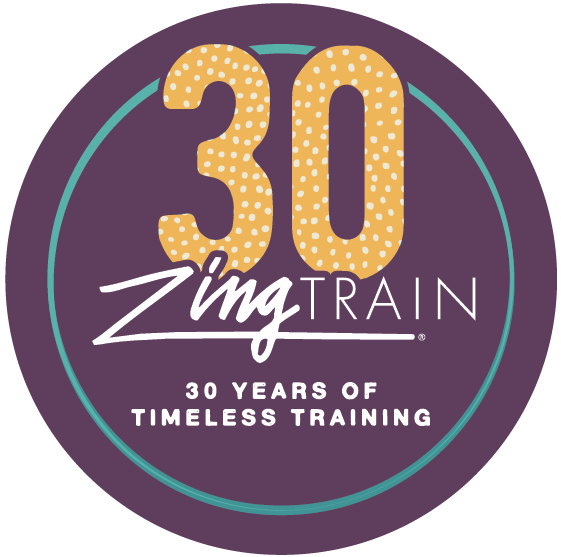What Does “Great Service” Mean in Your Business?
When clients ask us to help them develop customer service training for their businesses, we always start by helping them articulate and document what “great service” means to them. That’s because effective training starts by defining what the trainees will be expected to know or be able to do at the end of the training. So unless we know how our clients define great customer service in their businesses, we can’t know how best to design the training.
Ask any retailer whether or not customer service is important, and most, if not all, will answer, “of course, it’s very important” or even “it’s the most important thing.” But if you ask consumers how often they encounter great service, they’re likely to say, “not often,” “not often enough” or even “almost never.” Why the discrepancy? If retailers agree that service is extremely important, why is great service so hard to find?
Well, there are many, many reasons. But in my experience, the most significant reason that great service is hard to find is because most businesses haven’t defined what it means. Employees will agree to “give great service,” but if they don’t know what is expected when the boss says “great service” how can they meet the boss’s expectations?
What about you? Have you defined what “great service” means in the context of your business? If not, keep reading—and have paper and pencil at hand.
It Starts With Your Vision
What is your vision of great service? What does great service look like
when it’s happening in your business? The more clearly you can
articulate and document this vision, the easier it will be to train your
staff, and the better chance that your vision will be met. On the
other hand, if this vision isn’t documented, it’s next to impossible to
develop effective training.
I have helped a wide variety of clients document their visions of
great customer service. Most have included some or all of the following
elements:
• Customers are welcomed into the business.
• Telephones are answered promptly and politely.
• Staff are helpful, polite and good listeners.
• Staff make customers their #1 priority.
• Customers are thanked for their business.
• Customers leave feeling that their needs have been met.
Decide which of these elements, or others, define great service in your business. Then add in the details that will make the vision come alive for your staff. For example, in a local business with many regular customers, your vision may be that as many guests as possible are greeted by name. Similarly, when you say that you want the phones answered “promptly,” what do you mean—after the first ring or before the third? Once these elements are defined, it much easier to focus your training on the skills needed to make the vision a reality: how to answer the phone, how customers should be greeted, how to listen effectively, etc.
At Zingerman’s, we documented our vision of great service about 12 years ago, when the founding partners (Ari and Paul) were no longer working in the Deli on a day-to-day basis. They had been modeling their vision of great service for years, but when they weren’t on the floor every day, we realized that the vision needed to be documented so that it could more effectively be taught in a classroom format.
Zingerman’s 3 Steps to Great Service
1) Find out what the customer wants.
To find out what the customer wants, we teach our staff to actively
engage the customer. Rather than asking “may I help you?” (to which
“no, I’m just looking” is almost always the answer), we train staff to
ask open-ended questions that get people talking. The more we know
about our customers and what they’re shopping for, the better our
chances of figuring out what will best meet their needs.
2)Get it for them:
• accurately
• politely
• enthusiastically
Once we’ve figured out what the customer wants, we need to get it for them. Of course we need to be accurate, otherwise we’re not getting customers what they want. This means training staff on all of the many systems that have been developed to improve accuracy (following menus, reading back tickets, double-checking orders, etc.). We also train our staff to be polite, which includes using all those words our parents taught us: please, thank-you, sir, and ma’am. Last, but by no means least, we teach our staff what it means to be enthusiastic at Zingerman’s. In our training, we explain that we want each guest to leave feeling that he/she was the best thing that happened to us that day.
3) Go the extra mile.
In most businesses, if you find out what the customer wants and get it
for them, being accurate, polite and enthusiastic, it is considered a
service triumph. At Zingerman’s we consider those first two steps to be
the bare minimum of service. To achieve great service, we teach our
staff to add Step 3 and go the extra mile for the customer. We define
“going the extra mile” as doing something for the customer that they
didn’t ask for. For example, offering to carry someone’s bags to the
car, offering a handle bag to a shopper who just walked in the door with
his arms full (before he’s bought a thing from us), offering to call a
competitor to find out if they have a product that we’re out of,
offering a recipe card for a product that the customer is buying,
offering a sample of a hundred-year-old balsamic vinegar. None of
these is a big deal in and of itself, but we find that these little
things are what send people on their way thinking, “wow! that was a
great experience.”
Document Your Vision
Now’s the time to take a few minutes to jot down some elements that
express your vision of great service. Picture the person who best
exemplifies great service in your organization (this may or may not be
you—be honest with yourself) and try to capture what that person does
that makes them exemplary. Once you’ve gotten some ideas down on paper,
share them with others and get feedback. After incorporating that
feedback and doing a little polishing, you should have a serviceable
vision of great service.
 Back to Library
Back to Library





